Silver Streak (film)
6.6 /10 1 Votes
88% Rotten Tomatoes Initial DVD release December 14, 2004 Duration Country United States | 6.9/10 IMDb 2/5 Blu-ray Language English | |||||||||||||||||||||||||||||||||
 | ||||||||||||||||||||||||||||||||||
Release date December 8, 1976 (1976-12-08) Cast (George Caldwell), (Hildegard 'Hilly' Burns), (Grover Muldoon), (Roger Devereau), (Bob Sweet), (Sheriff Chauncey) Similar movies Richard Pryor and Gene Wilder appear in Silver Streak and See No Evil - Hear No Evil Tagline By train, by plane, by the edge of your seat - It's the most hilarious suspense ride of your life! | ||||||||||||||||||||||||||||||||||
Silver streak trailer
Silver Streak is a 1976 American comedy-thriller film about a murder on a Los Angeles-to-Chicago train journey. It was directed by Arthur Hiller and stars Gene Wilder, Jill Clayburgh, and Richard Pryor, with Patrick McGoohan, Ned Beatty, Clifton James, and Richard Kiel in supporting roles. The film score is by Henry Mancini. This film marked the first pairing of Wilder and Pryor, who were later paired in three more films.
Contents
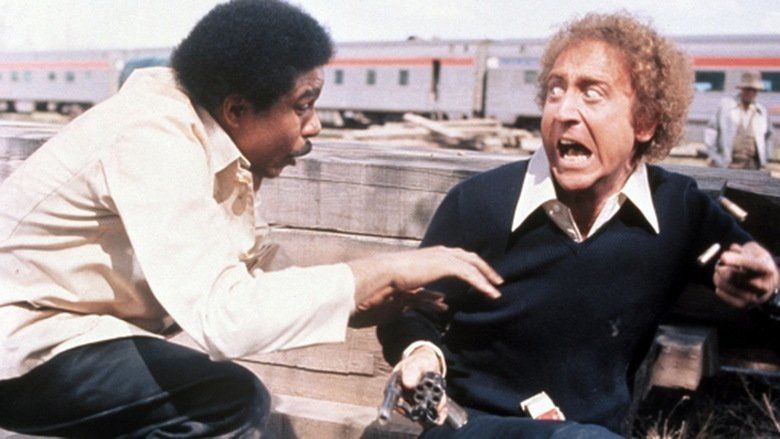
Plot
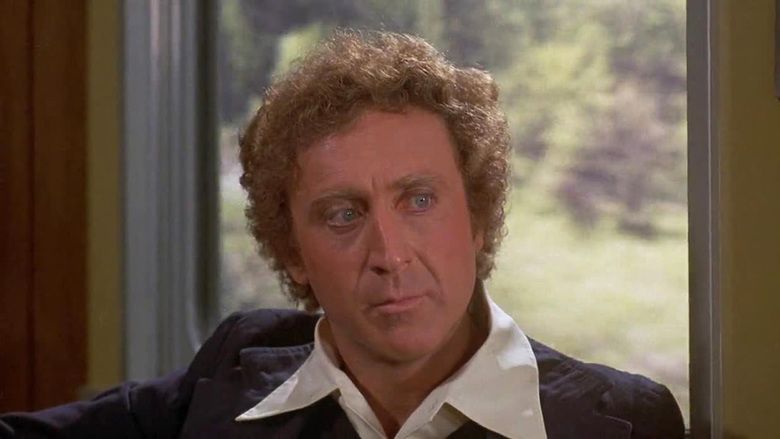
Book editor George Caldwell travels from Los Angeles to Chicago for his sister's wedding aboard a train called the Silver Streak. On board, George meets a vitamin salesman named Bob Sweet and a woman named Hilly Burns. Hilly works for Professor Schreiner, a well-known but reclusive art historian who is on a publicity tour for his new book on Rembrandt.
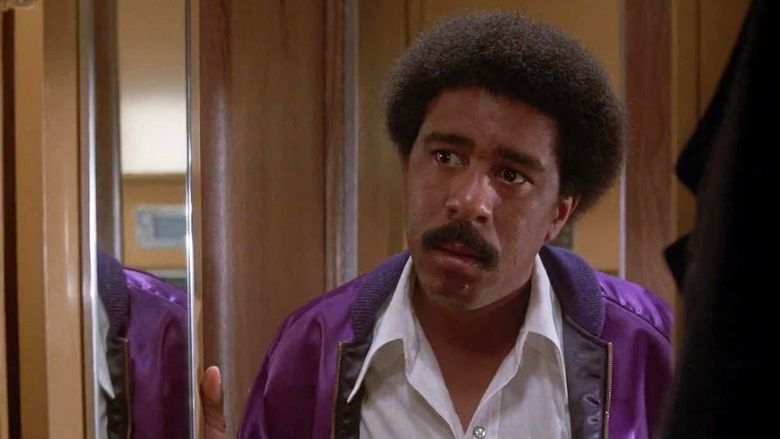
George sees a dead body dangling outside the window and then falling away. But he is drunk and Hilly insists he must have imagined it. In the morning, he sees Schreiner's book, with the author's photo: he was the dead man. Inside the book is an envelope. Schreiner's killers are Johnson, Whiney, and Reace. George goes to Schreiner's room, and Reace throws him off the train. George meets a farmer and they overtake the train in her biplane.
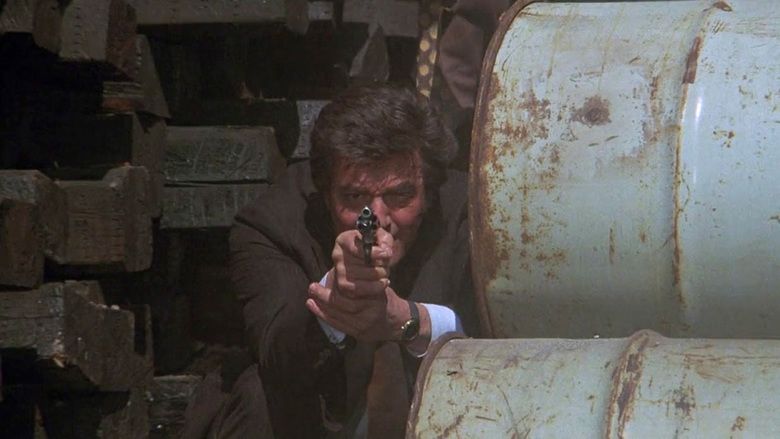
George sees Hilly with Johnson (who is impersonating Schreiner), Whiney, and art dealer Devereau. Devereau apologizes to George for the "misunderstanding" involving Reace. After mentioning "the Rembrandt letters," Johnson says he will return to his room for a glass of scotch.
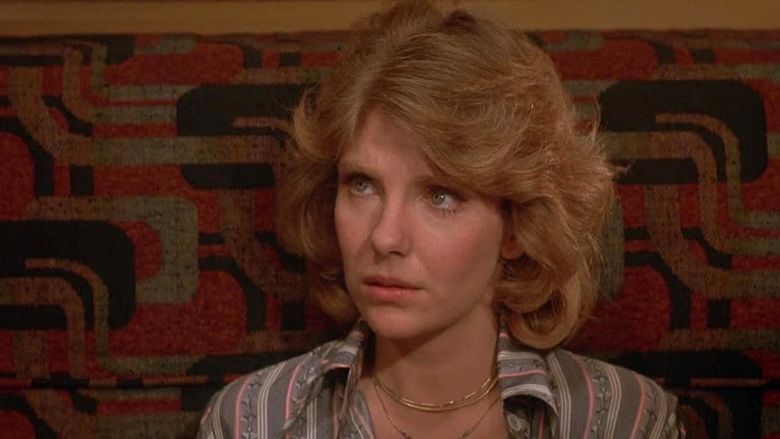
George goes to the club car and begins drinking, confiding in Sweet about his misadventure. Sweet reveals himself as an undercover FBI agent named Stevens. He confirms George's suspicions: the real Schreiner did not drink alcohol. Devereau is a criminal who passes himself off as an art expert, and Whiney, Reace, and Johnson work for him. His plan is to have Johnson, disguised as Scheiner, discredit the book that exposes Devereau for authenticating two forgeries as original Rembrandts. They find the envelope George saw. It contains letters written by Rembrandt, proving Devereau's guilt. But then Reace kills Stevens and goes after George. Their fight ends on the roof, where George kills Reace but is knocked to the ground by an overhanging signal.
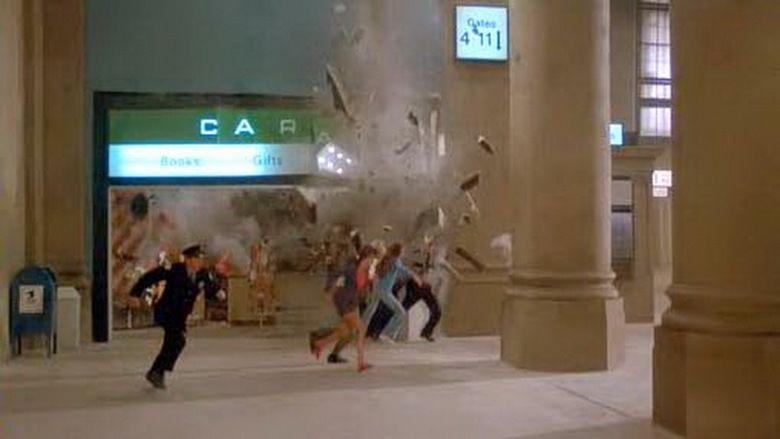
On foot again, George finds the local sheriff, but is accused of murdering Stevens. He escapes, stealing a patrol car which was transporting thief Grover T. Muldoon. George and Grover work together to reach the train at Kansas City. Grover disguises George as a black man and he gets by police and reboards the train.

George is captured, but he and Hilly are rescued from Devereau's room by Grover, disguised as a steward. After a shootout, George and Grover jump off the train and are arrested and taken to a train station, where federal agent Donaldson explains that he planted the Stevens murder story to protect George. George tells Donaldson about Devereau's plan, and Donaldson arranges for the train to be stopped by his men. Meanwhile, Devereau burns the Rembrandt letters.
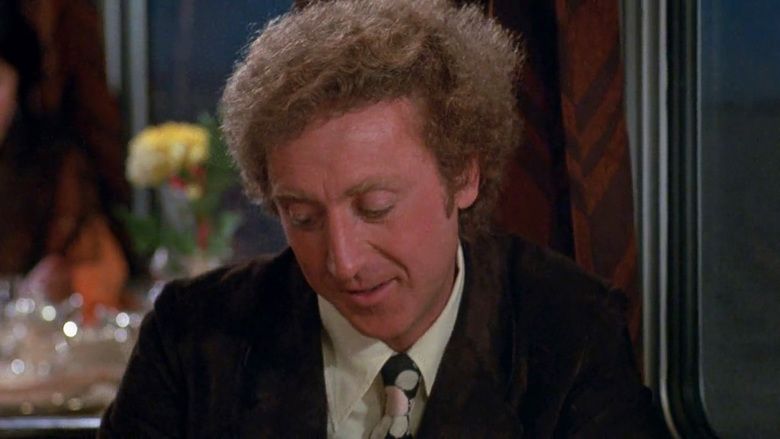
Once the train has stopped and the passengers are off, another shootout ensues. George boards the train a fourth time, with Grover, as Devereau climbs onto the locomotive and orders the engineer to start moving. An agent shoots Whiney, George shoots Johnson, and Devereau shoots the engineer and places a toolbox on the dead man's brake pedal. Devereau is then shot by Donaldson, falls, and is hit by an oncoming train.
Devereau and his men are gone, but with no one alive on the locomotive and the pedal depressed, the train is running away. Devereau's men had also disabled the emergency brakes. With the help of a steward (Scatman Crothers), George uncouples the passenger cars from the engine. The runaway engine roars at full speed into Chicago's Union Station, smashes through the end-of-track barrier, and on into the terminal, destroying everything in its path. The uncoupled passenger cars glide safely into to the station. Grover steals a sports car and drives away, and George and Hilly leave together.
Cast
Production
The film was based on an original screenplay by Colin Higgins, who at the time was best known for writing Harold and Maude. He wrote Silver Streak "because I had always wanted to get on a train and meet some blonde. It never happened, so I wrote a script."
Colin Higgins' script was sent out to auction. It was set on an Amtrak train and Paramount was interested, but wanted Amtrak to give its approval. Alan Ladd Jr and Frank Yablans at 20th Century Fox didn't want to wait and bought the script for a then-record $400,000. Ladd said "It was like the old Laurel and Hardy comedies. The hero is Laurel, he falls off the train, stumbles about, makes a fool of himself, but still gets the pretty girl. Audiences have identified with that since Buster Keaton."
Colin Higgins wanted George Segal for the hero - the character's name is George - but Fox preferred Gene Wilder. "He's younger (Wilder was actually a year older than Segal), more identifiable for the younger audience. And he's so average, so ordinary, and he gets caught up in all these crazy adventures."
Colin Higgins claimed the producers did not want Richard Pryor cast because Pryor had recently walked off The Bingo Long Traveling All-Stars & Motor Kings; he says the producer at one stage considered casting another black actor as a backup. However, Pryor was very professional during the shoot.
The film was the first collaboration on screen between Gene Wilder and Richard Pryor although Pryor was a writer, and the original choice for "Black Bart" in the Mel Brooks film Blazing Saddles, which also starred Wilder. The two later went on to make Stir Crazy, See No Evil, Hear No Evil, and Another You together.
Although set in the United States on the fictional railroad "AMRoad" (loosely based on Amtrak), Silver Streak was filmed primarily in Canada (with the exception of Union Station in Los Angeles). All exterior train shots were filmed on the Canadian Pacific Railway in Alyth Yard, Calgary, Alberta, and Toronto; Amtrak reportedly backed out of the project due to disapproval of the scenes in which Caldwell accidentally bursts into Burns' bedroom while she is dressing, and the film's ending with the out-of-control train crashing through the terminal in Chicago.
The scene with a de Havilland Tiger Moth biplane being flown to catch up with the train was shot in southern Alberta. The scene shows an old woman flying; it was actually the current owner of the plane, a man. The plane was painted with a water-soluble "silver" paint to cover its original colors—white overall, with an orange strip down the sides and orange leading edges.
Scenes of Midwestern US landscapes appear behind train layouts and many action shots (as the protagonist and allies battle the villains on and off the train, and get thrown off or jump on and off the moving trains) to add narrative integrity to the fictional location. Most of the interior station scenes set both in Kansas City and Chicago actually show different parts of Toronto's Union Station, except for a brief sequence immediately prior to the crash, where the train is rapidly approaching a bumper at the end of the line. That sequence was filmed from a Hi-Rail truck entering the Chicago and North Western Railway's downtown Chicago terminal.
The train set was so lightly disguised as the fictional "AMRoad" that the locomotives and cars still carried their original names and numbers, along with the easily identifiable CPR Action Red paint scheme, as well as the CP "Multimark" logo. At the start of the climactic shootout, a CPR EMD switcher is seen moving cars in the background. As the train enters the "Chicago" platform area, a Canadian National Turbotrain with a red nose and white body boarding passengers is clearly visible. Most of the cars are still in revenue service on Via Rail. CP 4070, the lead locomotive, is in Quebec, though long out of service, and the second unit, CP 4067, has been scrapped.
Reception
The film grossed over $51 million at the box office and was praised by critics, including Roger Ebert. It maintains an 88% approval rating at Rotten Tomatoes. Gene Siskel of the Chicago Tribune, however, called the film "a needlessly convoluted mystery yarn, which calls everyone's identity into question except Wilder's." Siskel, who gave the film just two stars, added that "the story isn't easy to follow" and that "I'm still not sure whether Clayburgh's character, secretary to Devereaux, was in on the hustle from the beginning."
Awards and honors
Score and soundtrack
Though the film dates to 1976, Henry Mancini's score was never officially released as a soundtrack. Intrada Records's 2002 compilation became one of the year's best-selling special releases.
References
Silver Streak (film) WikipediaSilver Streak (film) IMDbSilver Streak (film) Rotten TomatoesSilver Streak (film) Blu-ray.comSilver Streak (film) themoviedb.org
